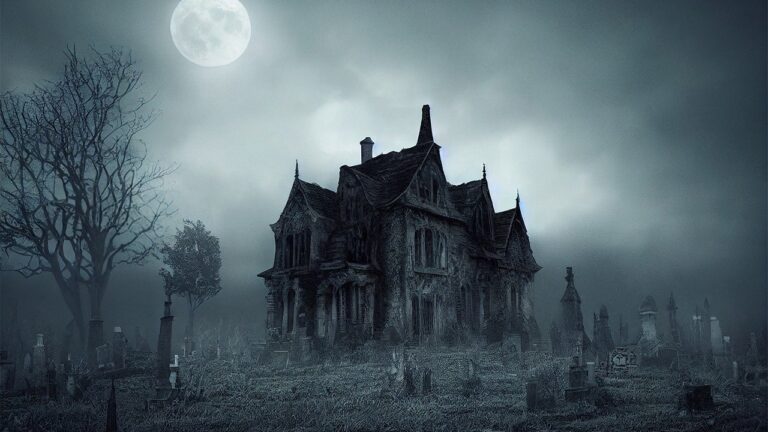Introduction to the Psychology of Horror Films
For decades, horror films have drawn millions into theaters, thrilling audiences with spine-chilling plots, jump scares, and gruesome monsters. But why do we enjoy being scared, and what makes horror such a uniquely captivating genre? The psychology of horror reveals that our love for these movies taps into a deep-seated fascination with fear, danger, and the unknown. This article explores the science behind horror movies, from brain reactions to psychological triggers, and unpacks why we crave the thrill of terror.
Why Do People Love Horror Movies?
Our attraction to horror may seem counterintuitive—after all, fear is an unpleasant emotion that we naturally try to avoid. Yet, many find horror films thrilling and satisfying. Psychologists suggest that horror movies provide a safe environment to explore fear without real danger. This sense of security, paired with excitement and adrenaline, is one reason horror is a genre people return to repeatedly.
The Appeal of Fear and Adrenaline
Horror films can trigger a fight-or-flight response, releasing adrenaline and dopamine into our systems, which are the same “feel-good” chemicals we get from activities like roller-coasters. This chemical rush can create a pleasurable experience as we face terrifying situations in a controlled setting, offering an escape from the mundane while activating intense emotions.
Horror Movies as a Unique Form of Entertainment
Horror stands out in the entertainment industry for its ability to elicit powerful reactions with carefully crafted narratives, visuals, and sounds. The genre’s unique power to manipulate emotions taps into universal fears, creating a captivating experience for audiences who seek excitement, surprise, and even catharsis.
Evolution of Horror Movies: A Brief History
Horror movies have a rich history that reflects changes in culture, technology, and psychology. Understanding the evolution of horror gives insight into why these films continue to captivate viewers.
Early Horror Films and Cultural Influence
Early horror films, such as Nosferatu and Frankenstein, played on societal fears of the unknown, often tapping into superstitions and folklore. These films laid the foundation for horror as a genre that could explore cultural anxieties, such as fear of the dark, death, and the supernatural.
Changing Trends in Horror Themes
Over the decades, horror themes have shifted to reflect the anxieties of each era. The 1950s often focused on nuclear fears with monsters like Godzilla, while the 1970s and 1980s introduced slasher films like Halloween, reflecting societal fears of violence and crime. Modern horror movies now delve into psychological themes and explore mental illness, societal pressure, and technology, making horror a genre that evolves alongside societal issues.
Modern Horror and Psychological Depth
Today’s horror films often prioritize psychological depth, exploring the complexities of the human mind and the darker aspects of society. Films like Hereditary and Get Out demonstrate how horror has matured to include social commentary and complex character studies, allowing audiences to engage in more profound ways with the genre.
The Brain’s Response to Fear
Watching horror movies can physically alter brain chemistry, activating specific areas associated with fear and emotional processing. This response is part of what makes horror so immersive and impactful.
Fight or Flight Response Explained
When we encounter fear—even simulated fear from horror films—the brain activates the amygdala, which triggers the fight-or-flight response. This survival mechanism readies the body to confront or escape danger, creating physiological changes like increased heart rate, heightened senses, and a surge of adrenaline.
How Horror Movies Stimulate the Amygdala
Horror films are expertly designed to activate the amygdala, the part of the brain responsible for processing fear. When viewers experience a jump scare or anticipate danger, the amygdala sends signals that release adrenaline and dopamine, causing a pleasurable “rush” for some viewers.
The Role of Dopamine and Adrenaline
The adrenaline-dopamine cycle induced by horror movies is one reason people find the genre addictive. Dopamine, often linked to pleasure and reward, provides a sense of excitement that can create a mild “high,” making viewers crave the thrilling sensations that horror films offer.
Psychological Mechanisms in Horror Films
Horror movies use various psychological techniques to heighten tension and evoke fear, making them one of the most psychologically complex genres.
Jump Scares and Startle Reflexes
Jump scares are a classic horror tool, triggering our natural startle reflex. This reflex is an automatic response to sudden movements or noises, making jump scares a simple yet effective technique for eliciting an immediate reaction from audiences.
The Uncanny Valley and Human Discomfort
The “uncanny valley” effect refers to discomfort or fear caused by things that appear almost human but are slightly “off,” such as eerie dolls or humanoid creatures. Horror films often use this phenomenon to make viewers uncomfortable, as it taps into a deep-seated psychological unease.
Suspense and Anticipation in Building Tension
Suspense is crucial in horror, creating a lingering feeling of dread that keeps audiences on edge. By delaying moments of terror or showing only glimpses of danger, horror films manipulate anticipation, making the eventual scare even more impactful.















